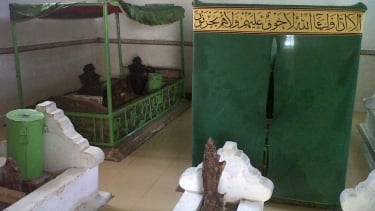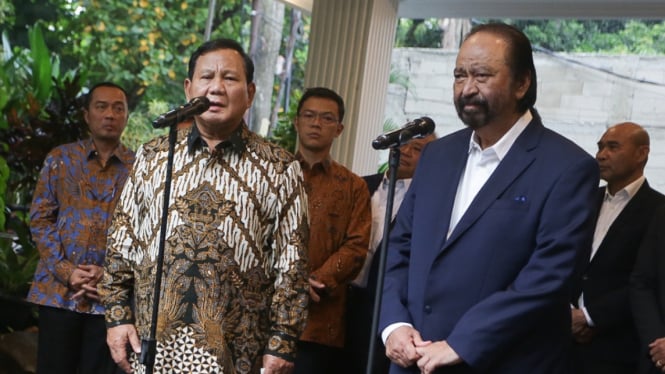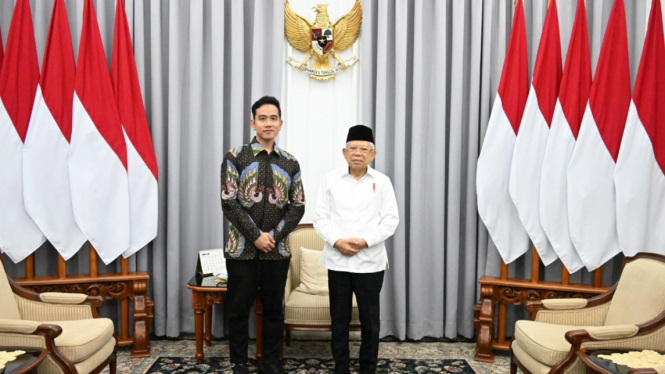VIVAnews - Muhammad Yusuf, or Sheikh Yusuf, is a spiritual and phenomenal figure from South Sulawesi who is still known until today. The man who was born in Gowa in 1626, or four centuries ago, was a cleric, Sufi, and the propagator of Islam through to Africa.
Sheikh Abdullah’s father, Yusuf Abul Mahasin, was reportedly a commoner with a strong Islamic background. Conversely Sheikh Yusuf mother, Aminah, was a direct descendant of Sultan Al Aladin.
Based on the narrative of Sheikh Yusuf tomb caretaker assistant, Rahmat, Sheikh Yusuf had been raised with Islamic ways by the family. He had to learn a variety of studies such as tawhid, fiqh and Arabic. At age of 15, he learned about religion further and became disciple to Sheikh Jalaluddin Al-Aidid in Cikoang, a coastal area in Takalar Regency.
Sheikh Yusuf is known as a man who always widened his religious horizon. Only after three years of study in Cikoang, or about 18 years old of age, he returned to Makassar and married the Princess of Gowa. Newly wed, he then left his homeland and went to the Middle East. The aim was to further deepen his religious knowledge.
During the journey, said Rahmat, he first went by a Malay boat from Makassar Port to Banten Port. In Banten, he settled for some time to learn religion and to establish close relationships with the elites of the Banten Sultanate, which was ruled by Abul Mafakhir Abdul Qadir '(1037-63/1626-51).
From Banten, Yusuf then left for Aceh and learned under the guidance of Ar-Raniri, then to India, and ended up in Yemen, the Middle East. In Yemen he became a disciple of Muhammad Abdul Baqi An-Naqshbandi and Syed Ali Az-Zabidi.
"From Yemen, he moved on to Mecca and Medina," said Rahmat.
Some historical records say, scholars who became his teachers during his stay in Mecca and Medina were Ahmad Al-Qusyasyi, Ibrahim Al-Reduce, and Hasan al-'Ajami.
Not only Saudi Arabia, Yusuf continued the journey to the center of Islamic knowledge in the Middle East, Damascus. Yusuf studied with one of the leading cleric Ayyub bin Ahmad bin Ayyub al-Ad-Dimasyqi Khalwati.
"In Damascus he earned the title At-Tajul Khalwati, or Khalwati Crown," said Rahmat again.
From Damascus, he later returned to Mecca before returning to his hometown, which was then still called ‘the archipelago’. In the course of seeking knowledge, which took about 20 years, and at the age of 38 years, he became a teacher in Saudi Arabia.
Coming from the Middle East, Sheikh Yusuf did not immediately return to Makassar. Instead, he stopped in Bantam and exercised all his knowledge there. His main reason of choosing Banten was unknown, but according to some information, Yusuf did not return to Goa (now Gowa) because there Islam did not have good image. Many acts were deemed insulting against Islam, such as gambling, cockfight, drinking wine and reviving animism without the Sultan’s taking any action.
He then chose Banten and became a religious adviser to the Sultan Ageng Tirtayasa. In Banten, too, Sheikh Yusuf was not only a teacher and scholar. But Sheikh Yusuf also participated in the guerrilla warfare against the Dutch, leading 4,000 soldiers from Bugis Makassar.
A persistent resistance against the invaders finally ended in 1682. In the month of September, Sheikh Yusuf with his two wives, several children, 12 pupils and several aides were arrested and exiled in Ceylon (now Sri Lanka).
In that country, Sheikh Yusuf once again shared his knowledge and wrote many religious books in Arabic, Malay and Bugis language. He also organized the people who performed Hajj and stopped over in Sri Lanka.
The Dutch government was apparently disturbed by the activities of Sheikh Yusuf who was still proselytizing actively. "Still feeling threatened, the Dutch colonizer then shifted Sheikh Yusuf to Kaapstad in South Africa," said Rahmat.
Then, Sheikh Yusuf and his 49 followers were placed in Zandveliet near the estuary of Eerste River, 35 kilometers from the capital of South Africa, Cape Town. The place was later renamed by the African people into Macassar Downs and the beach, Macassar Beach.
Despite being exiled, the preaching activity did not just stop. He even deepened the Islamic teachings of his followers. He influenced other exiles, most of whom were slaves, to take the fight.
Five years later, or on May 23, 1699, Sheikh Yusuf died at the age of 73 years. He was buried there only. The news of the death of the cleric titled Syekh Yusuf Tuanta Tuanta instantly circulated widely, including among the Dutch government in Batavia and the King of Gowa, Sultan Abdul Jalil.
At the request of the King of Gowa, in 1705, the bodt of Sheikh Yusuf was brought to Makassar, and buried in Lakiung, or now known as Ko'bang, located on Jalan Syekh Yusuf in the border between Gowa and Makassar.
"The noble man was buried on 6 April 1705 or 12 Zulhijjah 1116 H," said Rahmat.
VIVAnews correspondent in Makassar, Rahmat Zeena, contributed to this report
Translated by Indah Lestari





















